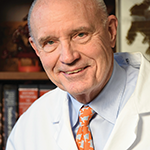 1949 was a momentous year—astronomer Fred Hoyle coined the term Big Bang, the North Atlantic Treaty Organization (NATO) was formed, and Rodgers and Hammerstein’s classic musical South Pacific opened on Broadway.1 Much less recognized was the publication of an essay by Richard Asher, FRCP, titled the “Seven Sins of Medicine.”2
1949 was a momentous year—astronomer Fred Hoyle coined the term Big Bang, the North Atlantic Treaty Organization (NATO) was formed, and Rodgers and Hammerstein’s classic musical South Pacific opened on Broadway.1 Much less recognized was the publication of an essay by Richard Asher, FRCP, titled the “Seven Sins of Medicine.”2
Although it’s over 75 years old, Dr. Asher’s essay seems timeless in the way that it outlines professional (and unprofessional) behavior among physicians and students. In fact, ever since I first read it back in medical school, I’ve been struck by how relevant it is. Indeed, many of the pitfalls that Dr. Asher described, like obscurity, cruelty, bad manners, overspecialization, love of the rare, common stupidity and sloth still plague our modern healthcare systems, despite the advent of new technologies and organizational cultures.
As rheumatologists, we often find ourselves at the nexus of complex, long-term care relationships. The nature of rheumatic diseases requires us to build strong, empathetic bonds with our patients. In many ways, we are the antithesis of the rushed, impersonal clinician who embodies Dr. Asher’s seven sins. But we’re not immune to these behaviors either. The pressures of modern healthcare—the ever-growing patient load, administrative burdens and relentless drive for efficiency—can push us into shortcuts that compromise patient-centered care.
That’s why I think it’s high time we reframe Dr. Asher’s seven sins, not as a list of what to avoid, but as a set of virtues to cultivate. These aren’t just theoretical ideals: They are practical strategies for making sure that, no matter how much our world changes, the core values of humanism in medicine remain the main driver for our actions. So let’s rheuminate on the seven virtues of rheumatology.
1) Clarity Over Obscurity
The first sin Dr. Asher described was obscurity. A clinician who speaks in convoluted terms can make a patient feel confused, overwhelmed or even diminished. This may be intentional or completely unintentional, yet the end point is exactly the same. In rheumatology, where diseases are often complex and lifelong, clarity is one of the most powerful tools in our armamentarium. Our patients already face significant challenges in understanding their conditions. The least we can do is speak clearly, avoiding unnecessary medical jargon that creates barriers rather than bridges.3
Clarity also extends to the transparency of our intentions. Patients deserve to know not only what we’re doing, but why. If we are adding a new medication, running a new test or suggesting a change in lifestyle, our explanations should be framed with the patient’s understanding in mind. When we communicate with clarity, we empower our patients to take ownership of their health. It is this partnership, built on mutual understanding, that fosters the long-term relationships so critical to managing chronic diseases.


